Categories
- Wire & Cable
- Multi-conductor & Signal Cable
- Battery Cable Assemblies
- Terminals and Connectors
- Electrical Parts
- Electrical Tools
- ID Products
- Wire Management
- Tape & Sealant
- Mounting Panels & Panel Blanks

Need Help?
Click HereGet a Business Account
Apply HereCoax Connectors
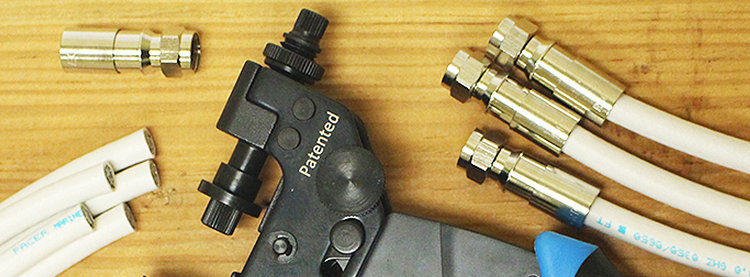
What are Coax connectors?
Coax connectors are specialized connectors designed specifically for use with coaxial cables. These connectors manage both the inner conductor and the outer shield of the cable, ensuring a secure and reliable connection. Different types of coax connectors are tailored to various coax cables and environments, especially demanding ones like marine applications. Pacer offers a comprehensive range of coax connectors crafted from top-quality materials to guarantee durability and performance, even in the toughest conditions.
"Pacer offers a comprehensive range of coax connectors crafted from top-quality materials to guarantee durability and performance, even in the toughest conditions."
Where are these products implemented?
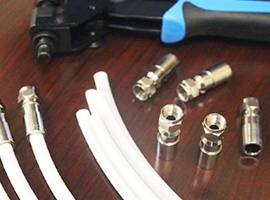
Coax connectors perform functions others cannot
Coax connectors are implemented in applications that require a disconnectable, high-quality connection for communication signals. These connectors are built for both new installations and when replacing older parts. If your electrical system has cracked connectors, faded connectors, or otherwise damaged connectors, then these may just be the perfect solution. In order to properly install coax connectors, you will need to use the proper tools and coaxial cable. Coax connectors are designed with versatility and durability in mind.
What types of coax connectors are available?
Coax connectors come in many varieties, including BNC, RCA, couplers, and reducers—each engineered for specific cable types and applications. Pacer specializes in a broad lineup to cover the extensive range of coax cable uses.
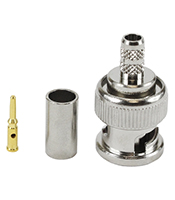
BNC series connectors Known for quick, secure connections, BNC connectors feature a bayonet-style locking mechanism. A simple quarter-turn of the coupling nut locks or unlocks the connection. These connectors, suitable for 75 Ohm cables, use gold-plated contacts with brass and zinc plating for reliability and conductivity.
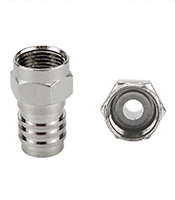
Female connectors Designed for RG6 or RG59 cables, female connectors include an integral crimp sleeve for easy termination. Nickel-plated and built for durability, they commonly support low-power video and radio frequency signals. Available in plug and twist types, they offer flexible installation options.
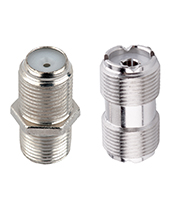
CouplersCouplers connect two female connectors, effectively extending cable length. They are simple to use—just screw one end onto an existing cable and attach the next cable to the other side, creating a continuous transmission line.
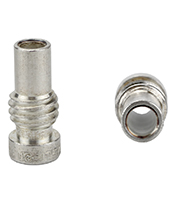
ReducersWhen cable connectors differ in diameter, reducers bridge the gap. Compatible with RG59, RG58, RG62, RG8x, and LMR240 cables, reducers are common in ham radio setups and are available in nickel or silver plating. They support frequencies from DC up to 500 MHz and voltage peaks of 500V.
Where would I use coax connectors?
Coax connectors are ideal in applications where data transmission for radio frequency signals need a high degree of flexibility and protection. Coax connectors are often used in transmission lines, digital audio, radio receivers, computer networking, and more. They are even used in television distribution. Basically, you would use coax connectors in any application where you have any of a number of coax cables running. You might use coax connectors to connect your cable box to your television or you might use them to connect your modem to your computer or network. The bottom line is that coax connectors offer a high degree of versatility and durability in even the toughest of conditions.
![]()
Cable Television
![]()
Computer Networks
![]()
Digital Audio
![]()
Radio Receiver
What is the difference between 50 Ohm and 75 Ohm connectors?
The difference between 50 Ohm and 75 Ohm connectors lies in their impedance—the resistance they offer to electrical current flow. Measured in Ohms, impedance affects signal quality:
- 50 Ohm have lower impedance for applications requiring minimal resistance and maximum performance.
- 75 Ohm have higher impedance, commonly used in video and cable TV systems.
Choosing the correct impedance depends on your specific equipment and coax cable type to ensure optimal signal integrity. Make sure that you are aware of the requirements of your project. The Ohms will likely be determined by the type of coax cable you are using. It is also a good idea to be aware of which tools to use.
![]()
![]()
What tools should I use with coax connectors?
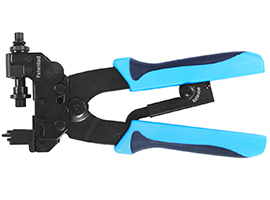
Coax connectors require specific tools in order to get the proper crimp. For most of our coax connectors, our VTCL-4080 is the ideal tool to get the job done. This ratcheting compression tool creates the perfect amount of pressure and, in turn, crimps the connectors properly, creating perfect seals from the connector bodies. The VTCL-4080 is ideal for use with R/A-type connectors, F-type connectors, and RCA-length connectors. One thing that makes coax connectors advantageous is the fact that they are field serviceable with the VTCL-4080. This tool ensures professional-grade results and is favored across industries for its reliability and field serviceability
What industries use coax connectors?
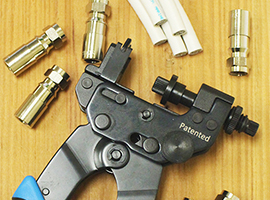
Coax connectors are found in use in a wide range of commercial and industrial applications. They are frequently used as connectors for transmission lines for radio frequency signals and are often found in computer networks, digital audio signals, radio receivers, as well as cable television distribution. If you have ever looked at your cable box, then you have likely seen coax cable and coax connectors. Same thing with your modem, as many companies use coax cable and coax connectors for internet hookup. To summarize, coax connectors are used anywhere high-frequency electrical signals need to be sent with low losses.
*This page was updated on 7/01/2025*


